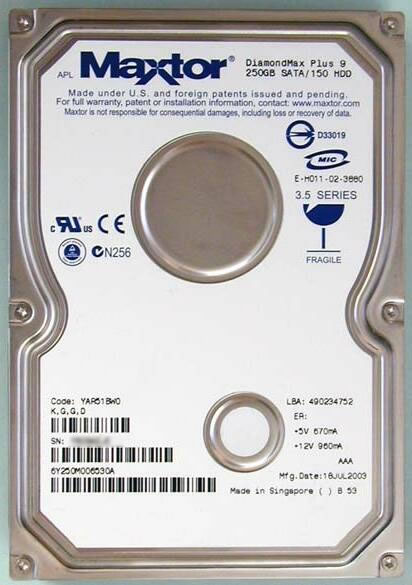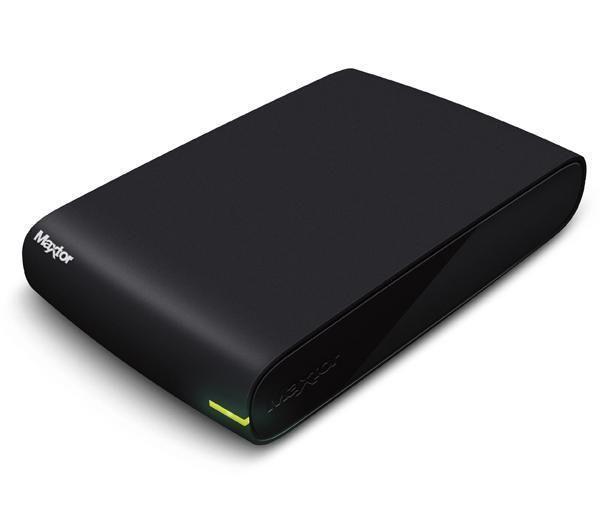Data Recovery From Maxtor Hard Drive
 Maxtor produces hard drives for home and professional use since 1990. These drives had very good reputation for their credibility, with the DiamondMax series to be considered - even today - one of the best hard drives' family, which was the reason that the company was Νο3 hard drives company in the world until May 2006 that was bought by Seagate.
Maxtor produces hard drives for home and professional use since 1990. These drives had very good reputation for their credibility, with the DiamondMax series to be considered - even today - one of the best hard drives' family, which was the reason that the company was Νο3 hard drives company in the world until May 2006 that was bought by Seagate.
One of the most common problem that the Maxtor drives exhibit is firmware problems. Firmware is stored on the platters, on the System (Service) Area of the Maxtor hard drive. If one of these modules gets damaged, then the drive can't start and is recognized by its code name. For example, instead of the model name a "MAXTOR N40P" displays on the DiamondMaxPlus 8 drives, a "MAXTOR CALYPSO" on the DiamondMaxPlus 9 drives, a "MAXTOR FALCON" on the DiamondMax Plus 10 drives etc. If your drive exhibits this problem, there is a solution! You can't solve this problem alone. It is a complicated procedure, that requires expensive equipment and experience in data recovery.
MAXTOR is also known for their 'melodic' drives series. These drives give a melodic sound - like a mobile phone sound - when their motor gets stuck (hear the sound here). This damage requires for the motor to be unblocked with a specific technique and opened inside a clean room so that the platters are moved to a new donor-drive. This is a complicated process that requires precision, experience and use of specilazed equipment in order to retain the heads alignment.
Another damage that Maxtor drives can have is the PCB electronic error. This usually occurs due to overheating, power surge or problems in the drive's motor. If this happens, the drive won't start and - of course - is not recognized by the BIOS at all.
If the drive makes "clicking sounds" when it starts - hear some typical examples here -, then most times this is a sign of damaged heads. In that case, it is very important to run the appropriate diagnostics in order to rule out the possibility that the drive is damaged due to problems in the firmware or a PCB problem.
Finally, a classic problem of these drives (as well as of all drives) is that of Bad Sectors. After a while, the platter to which the data are written start to degrade and bad sectors appear. When the drive tries to read these parts of the surface, it can "freeze", or make strange sounds like "scratching", light ticks or loud noises. As soon as the drive starts displaying these kind of problems, it is very important to power it off and send it to us for a free evaluation. In its lab Northwind uses expensive cloning tools which can bypass the corrupted parts and read data from the 'healthy' parts of the drive's surface. This is usually the only method through which data recovery from Maxtor drives is possible.


